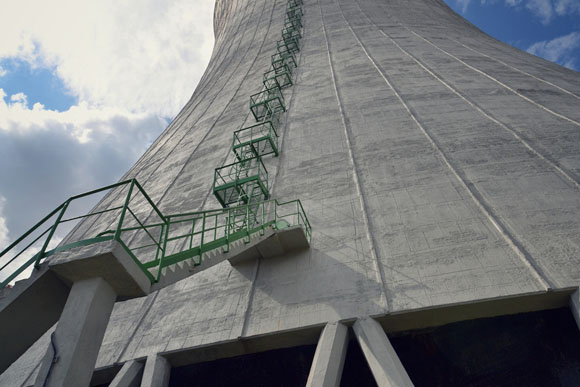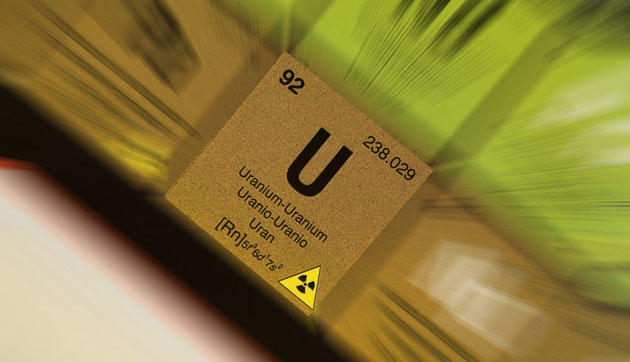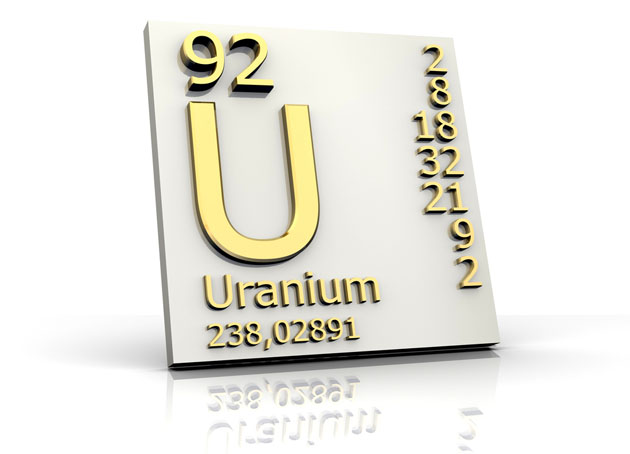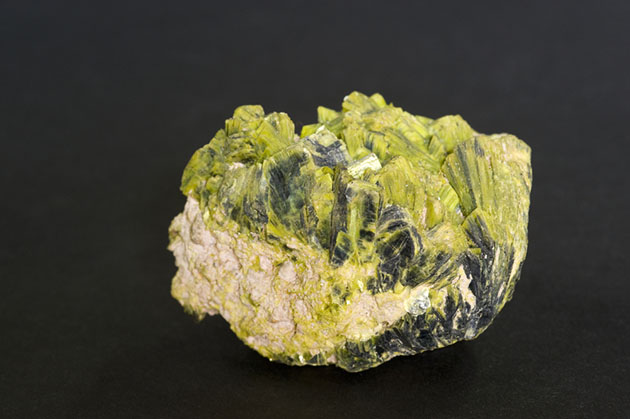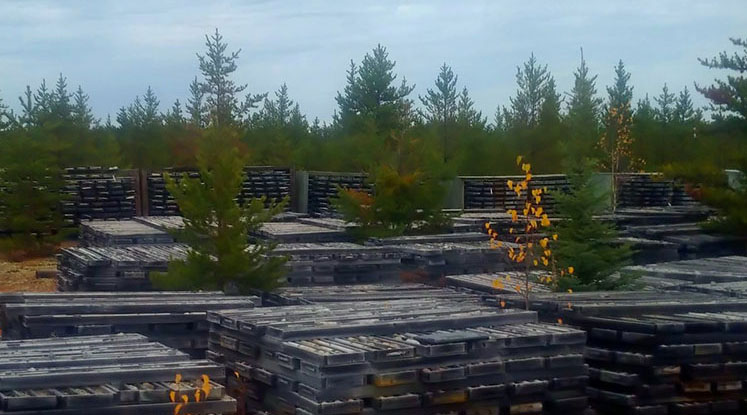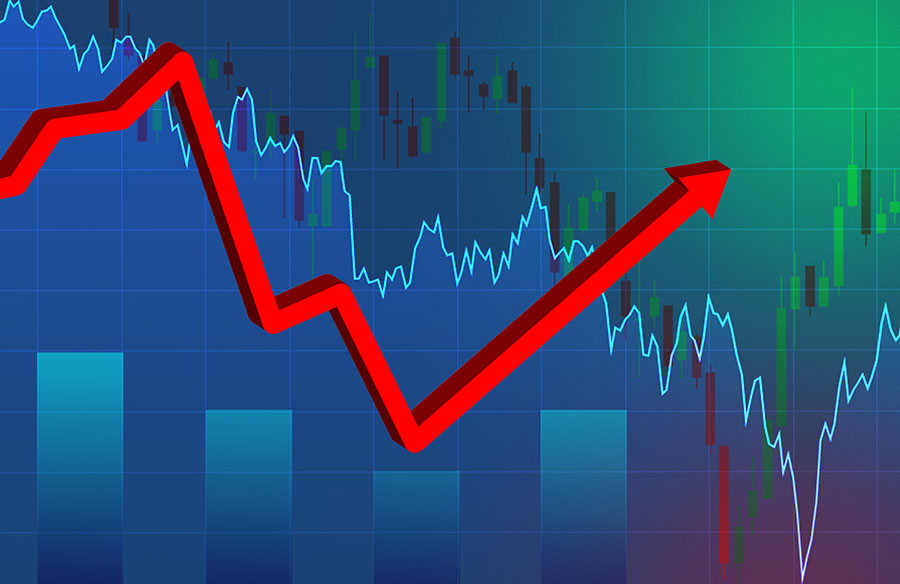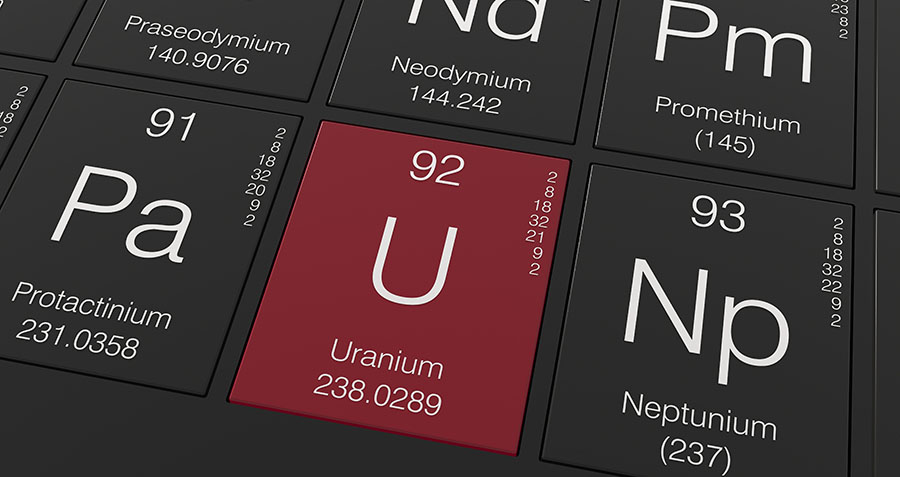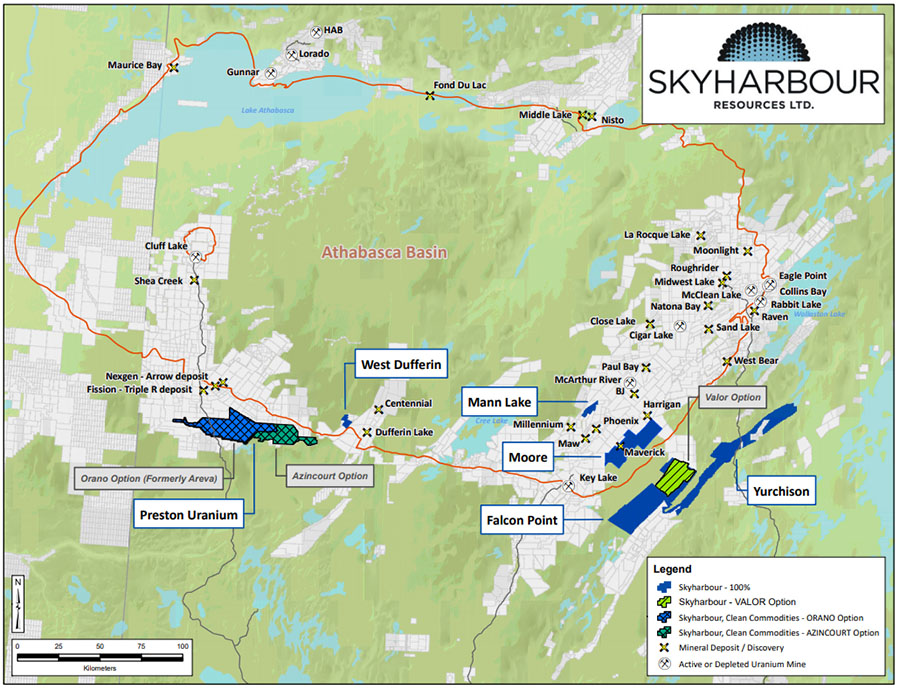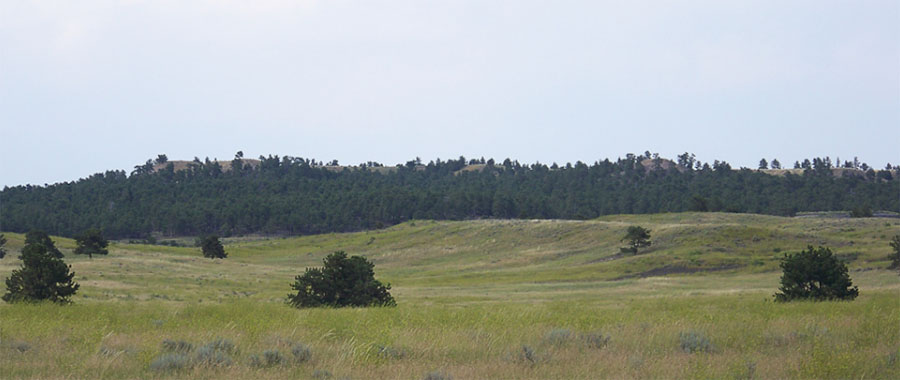The Energy Report: UEX Corp. (UEX:TSX) describes itself as Canada's "blue chip" uranium junior. What makes it so?
Roger Lemaitre: We have acted like a blue chip throughout our history. There's a chart in our presentation demonstrating the close correlation of UEX's share price to uranium's spot price. Yes, junior companies tend to correlate well, but they also tend to be more volatile than we've been. The reason is that we're sitting on 86 million pounds (86 Mlb) of U308 that could be developed in a reasonable period of time in the world's best jurisdiction. We're a proxy for the uranium price for some investors, and we're cheaper than, say, Cameco Corp. (CCO:TSX; CCJ:NYSE).
TER: You were with Cameco for quite a few years, right?
RL: I've been focused on uranium exploration for the last 14 years. Twelve were with Cameco, where I was involved in the Rabbit Lake/Eagle Point extension/discovery that's kept that mine running for a dozen years longer than projected. I oversaw Cameco's exploration programs in Saskatchewan and globally. I was appointed president and CEO of UEX in December 2013.
TER: What's your professional training?
RL: I have a bachelor's degree in geological engineering from Queen's University, a master's degree in geology from McGill University and a master's degree in business administration from Athabasca University.
TER: Cameco owns 21.28% of UEX. How did that come about?
RL: Cameco was one of our founding shareholders in 2002, and contributed our Hidden Bay property in exchange for its initial share position.
TER: What are the advantages to UEX of Cameco's shareholding?
RL: Cameco has been involved in most of the equity financings we've done. The company helped us get up to speed on uranium exploration in the early days. We have had access to Cameco's technology and know-how, but Cameco doesn't meddle in our day-to-day affairs.
TER: How do the skills and experiences of the other managers at UEX complement yours?
RL: Ed Boney, our CFO, was controller at a junior with producing gold mines in Canada and Peru. He also worked for Deloitte & Touche, so he has practical experience in accounting and financing. Sierd Eriks, our vice president, exploration, has three decades of experience in the Athabasca Basin. And Nan Lee, our vice president, project development, is experienced in environmental engineering and mining. She covers the bases of the expertise needed to get UEX to the next milestones.
TER: Your Shea Creek property, the second largest uranium resource in the Athabasca Basin, is operated by, and owned 50.9% by, AREVA SA (AREVA:EPA). What are the advantages of this joint venture?
RL: AREVA is a world-class uranium company and a great partner, and has the skill set needed to mine uranium in the basin. AREVA knows the basin-specific mining technology and has great relationships with local stakeholders. We earned our 49.1% by investing $30 million ($30M) in exploration over a six-year period.
TER: What are the Inferred and Indicated resources at Shea Creek?
RL: Inferred and Indicated resources are 95 Mlb of U3O8, of which we own almost half, about 47 Mlb.
TER: You have another uranium project, this one 100%-owned: Hidden Bay, the sixth-largest resource in the basin. What are its resources?
"We're thrilled to be looking for the new generation of deposits in the Athabasca Basin, in what we consider the prime piece of real estate in the entire district."
RL: Hidden Bay, which comprises the Raven, Horseshoe and West Bear deposits, has Inferred and Indicated resources of about 37.5 Mlb.
TER: What's the path to production for Shea Creek?
RL: The next step is a prefeasibility study, but that's on hold until the price of uranium increases to somewhere north of $60 per pound ($60/lb).
TER: Does a Hidden Bay production decision also depend on a significant uranium price increase?
RL: Correct. We would like to begin a prefeasibility study for Hidden Bay, but it's been put on hold.
TER: UEX announced on Sept. 19 that its $2M private placement had been increased to $3M. You must have been happy about that.
RL: Extremely. One of UEX's short-term drivers is our new Hidden Bay basement-targeting program. This $3M will fund that directly.
Let me give you some background. When you look at the last decade of discovery in the Athabasca Basin, you have the Millennium, Roughrider and Patterson Lake South discoveries. You have the Gryphon zone, discovered by Denison Mines Corp. (DML:TSX; DNN:NYSE.MKT). You have our own deep Shea Creek deposits. You have the Eagle Point North Extension deposits, and you have the Phoenix Deposit. Five of those six discoveries were located in the basement below the traditional unconformity targets. When I started in the uranium business in 2001, it was assumed that looking below the basement was a waste of time. Until recently, uranium explorers had what we call "unconformity goggles." They would drill until they hit the unconformity and then stop.
TER: Now that you've removed the goggles, what's your plan?
RL: Over the summer, we've explored our database and looked for indications of where exploration testing for an unconformity deposit failed to find unconformity uranium mineralization, but found that proximal alteration and geologically/geochemically the right stuff was there, but was never checked for at depth, into the basement. That review yielded 12 areas that needed further work for basement mineralization. We then investigated old drill core from six of those areas. What was really exciting is that we uncovered previously unknown intense Millennium-style basement alteration that has yet to be followed up on.
"There's a big niche for cost-effective uranium, and that's where our projects fit quite nicely."
We're thrilled to be looking for the new generation of deposits in the Athabasca Basin, in what we consider the prime piece of real estate in the entire district. We already know where to focus. We have the style of alteration and mineralization that tells us to go deeper.
TER: What's the drilling season in the Athabasca Basin?
RL: The optimal season is winter, which means the beginning of December through to the end of March and perhaps the end of April. Depending upon the location of targets, and access to these areas, some targets can be tested in the summer months.
TER: How much cash will you spend at Hidden Bay this winter, and how many holes will you drill?
RL: We're planning to spend about $2.5M. That doesn't sound like much, but keep in mind that we have, at Hidden Bay, the shallowest sandstone cover in the basin. It is less than 175m deep, and our prime targets are located in less than 50m of sandstone. Our "deep" targets go only 100–200m below the unconformity. We will drill 10,000m (10km) this winter, and shallow drilling means a lot of holes.
TER: What are your drilling plans for Shea Creek?
RL: We're discussing with AREVA plans to seek new lenses immediately south of the Shea Creek deposits. UEX is uniquely positioned because our deposits are open, with potential for depth and strike extensions that have not yet been fully tested. Our winter/summer program at Shea Creek will test the area around the SHE-02 drill hole, located 2km south of the existing Shea Creek deposits. SHE-02 was drilled before our current deposits were discovered, and it encountered approximately 0.34% U308 over 0.4m. Because they had continued exploration to the north along strike on the Saskatoon Lake Conductor and discovered the Anne and Collette deposits, the operator has not yet had the opportunity to come back to follow the SHE-02 results. Now, this winter we're going to.
TER: With the great number of companies involved in the basin, has this built up a store of infrastructure?
RL: There's excellent infrastructure in the basin, particularly on the east side because you have three operating mills there. Power and all-weather gravel roads service those mines. You can get commercial flights and bush flights from Points North. Our Raven and Horseshoe deposits are located only 4km from the Rabbit Lake Mill, and are located along the road and power right-of-ways.
TER: As you mentioned above, the future of uranium mining in Saskatchewan depends on higher uranium prices, which in turn depends on supply and demand. Is the world facing a surplus or a shortage of uranium?
RL: The International Atomic Energy Agency (IAEA) recently declared there's more than enough uranium to meet world demand for the next 65–100 years. This is true, if one ignores price/cost considerations. There's a lot of uranium out there, but not a lot of economic uranium—certainly very little at today's prices. Many producers are underwater now. Even a tripling of the price still doesn't meet the low-end uranium demand the IAEA is forecasting for uranium demand in the next 25 years.
"We are definitely in that nuclear renaissance the industry was talking about five years ago."
There's a big niche for cost-effective uranium, and that's where our projects fit quite nicely. They don't meet today's price, but even the current producers are struggling to meet today's price. You see that with the supply cutbacks at Denison Mines Corp., Paladin Energy Ltd. (PDN:TSX; PDN:ASX) and others.
TER: How does uranium's future depend on the construction of new reactors and the replacement of old ones?
RL: That's what's driving the business. The market is completely out of equilibrium now. A decade ago, only half the uranium demand was supplied by primary uranium production from new mines. Back then there were large stockpiles and secondary sources of uranium, but those have largely disappeared. As little as three to four years from now, we're going to have a uranium supply shortfall.
Today, we are definitely in that nuclear renaissance the industry was talking about five years ago. If you look out at the new reactor builds, we're seeing 25% net growth in nuclear power. In the next 20 years, we can expect many new reactors and fewer retirements. That kind of growth hasn't been seen since the 1970s and 1980s, and it's being driven by the developing countries. In three years, China will have installed more nuclear capacity than Japan has sitting idle right now.
TER: Does the prospect of sanctions against Russia affect the uranium industry?
RL: Yes, especially from the utilities' point of view. Half the world's commercial enrichment capacity is in Russia. If the sanctions continue, this will be imperiled. The Russians have the ability to enrich uranium and are looking to export it. Electric utilities that are worried about their supply chains know that it takes about three years to take a drum of yellowcake and turn it into fuel pellets. If half the supply chain disappears, or there's a clog in the middle, the utilities will be in trouble.
The oversupply in the uranium market today is due to the fact that five or ten years ago prices were high, so suppliers entered into long-term contracts. These contracts will begin to taper off in 2016–2018. After the Fukushima disaster in 2011, some excess inventories were sold off. Today's market doesn't reflect the coming termination of these long-term contracts. When the Japanese restart their reactors, supply will again be at a premium. It's a question of when, not if.
TER: Is China capable of supplying all the uranium needed for its new reactors?
RL: Absolutely not. The Chinese have been big buyers in uranium markets, and new reactors require more uranium than those already in operation. We call this the "initial cores." China has been buying on this basis for six or seven years, and this will continue for some time.
TER: After falling below $30/lb, the spot price of U308 has increased significantly. How encouraging is this?
RL: The price recently reached $42/lb. This is very encouraging because it demonstrates that the market is reacting to supply constraints. We also saw a short-term strike at the world's largest mine, and that scared people.
Right now, the suppliers and utilities are playing a game of chicken. Utilities are saying they don't need new supply for another three years, while suppliers are refusing to sign long-term contracts because they can't make money. The utilities have won this game for years because they didn't have to buy. Now, we wonder if the utilities are beginning to worry about their ability to buy to meet short-term needs.
TER: Where do you see your company in three years?
RL: With the anticipated rise in the price of uranium, we'll be pushing Shea Creek and Hidden Bay to prefeasibility, and continuing to expand our resources through our basin-targeting program. We'll also be looking for acquisitions that would be accretive to UEX.
TER: How close would you have to be to production before looking at end-user agreements?
RL: At or near the end of the feasibility stage. If you look at the more recent producers, such as Uranerz Energy Corp. (URZ:TSX; URZ:NYSE.MKT) and Ur-Energy Inc. (URE:TSX; URG:NYSE.MKT), they were looking at contract signings at that stage.
TER: Where do you see uranium prices going for the rest of this decade?
RL: I'm a uranium developer, so of course I'm optimistic. That said, when you examine the fundamentals, prices must rise above $60/lb to meet the growth in demand that's out there. There aren't any alternatives because unless the price rises, the new mines that will satisfy demand simply won't be built. The industry seems united on this. Rio Tinto Plc (RIO:NYSE; RIO:ASX; RIO:LSE; RTPPF:OTCPK), Cameco, AREVA and the other companies all say that higher prices are needed to bring the capital into the industry to make new construction and production possible. But, as I said, we do have a major supply shortfall looming in three to four years, so I think my optimism is justified.
TER: Roger, thank you for your time and your insights.
 Roger Lemaitre is president/CEO and a director of UEX Corp. He was formerly CEO and executive director of URU Metals Ltd., an AIM-listed junior uranium and base metals exploration company. He worked 12 years for Cameco, where he was global director of exploration. He holds a bachelor's degree in applied science in geological engineering from Queens University, a master's degree of applied science in geology from McGill University and a master's degree in business administration from Athabasca University.
Roger Lemaitre is president/CEO and a director of UEX Corp. He was formerly CEO and executive director of URU Metals Ltd., an AIM-listed junior uranium and base metals exploration company. He worked 12 years for Cameco, where he was global director of exploration. He holds a bachelor's degree in applied science in geological engineering from Queens University, a master's degree of applied science in geology from McGill University and a master's degree in business administration from Athabasca University.
Want to read more Energy Report interviews like this? Sign up for our free e-newsletter, and you'll learn when new articles have been published. To see a list of recent interviews with industry analysts and commentators, visit our Streetwise Interviews page.
DISCLOSURE:
1) Kevin Michael Grace conducted this interview for Streetwise Reports LLC, publisher of The Gold Report, The Energy Report, The Life Sciences Report and The Mining Report, and provides services to Streetwise Reports as an independent contractor. He owns, or his family owns, shares of the company mentioned in this interview: None.
2) UEX Corp. paid Streetwise Reports to conduct, produce and distribute the interview.
3) The following companies mentioned in the interview are sponsors of Streetwise Reports: UEX Corp., Uranerz Energy Corp., Ur-Energy Inc. Streetwise Reports does not accept stock in exchange for its services.
4) Roger Lemaitre had final approval of the content and is wholly responsible for the validity of the statements. Opinions expressed are the opinions of Roger Lemaitre and not of Streetwise Reports or its officers.
5) The interview does not constitute investment advice. Each reader is encouraged to consult with his or her individual financial professional and any action a reader takes as a result of information presented here is his or her own responsibility. By opening this page, each reader accepts and agrees to Streetwise Reports' terms of use and full legal disclaimer.
6) From time to time, Streetwise Reports LLC and its directors, officers, employees or members of their families, as well as persons interviewed for articles and interviews on the site, may have a long or short position in securities mentioned. Directors, officers, employees or members of their families are prohibited from making purchases and/or sales of those securities in the open market or otherwise during the up-to-four-week interval from the time of the interview until after it publishes.


